How to Teach Place Value up to Billions: A Fun and Engaging Guide
Teaching place value up to billions might sound as daunting as scaling Mount Everest without a sherpa but fear not! With the right tools and a sprinkle of humor, you can make this math concept as fun and engaging as a game of treasure hunt. Whether you're a teacher navigating a classroom full of energetic students or a parent tackling homework sessions, this guide will help you turn place value into an adventure your kids will love.
Why Place Value Matters
Before we dive into the nitty-gritty, let’s talk about why place value is essential. Understanding place value is like having a roadmap for navigating the world of numbers. It’s the foundation of all arithmetic operations and critical for mastering larger mathematical concepts. Without a firm grasp of place value, students might find themselves lost in the jungle of numbers, unable to differentiate between millions and billions. So, let’s equip them with the skills they need to become math adventurers!

Standards to Keep in Mind
Our place value journey aligns with the following standard: CCSS.Math.Content.4.NBT.A.2: Read and write multi-digit whole numbers using base-ten numerals, number names, and expanded form. Compare two multi-digit numbers based on meanings of the digits in each place, using >, =, and < symbols to record the results of comparisons.
To make teaching place value up to billions a breeze, consider using a mix of worksheets, visual aids, and hands-on activities. Here are a few ideas to incorporate into your lessons:
- Place Value Chart Start with a place value chart that breaks down numbers from units all the way up to billions. This visual tool is essential for helping students grasp the concept of place value. Displaying a place value chart in your classroom or study area provides a constant reference point for your students.
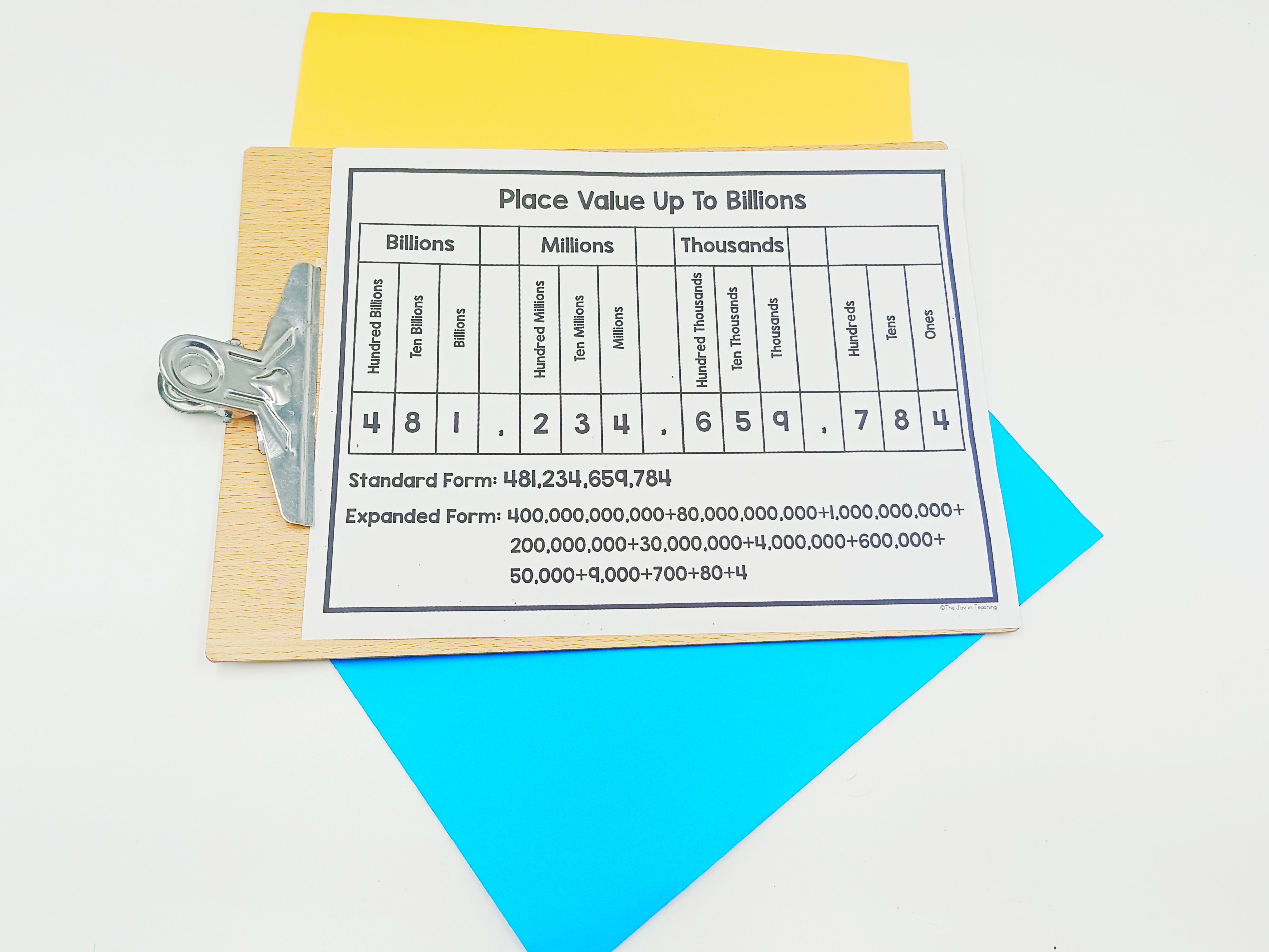
2. Coloring Activities Kids love coloring, and this activity combines art with math practice. Each worksheet can feature numbers that students need to color according to their place values. For example, the billions place might be colored red, the millions place blue, and so on. This activity reinforces place value while adding a splash of creativity to your math lessons.
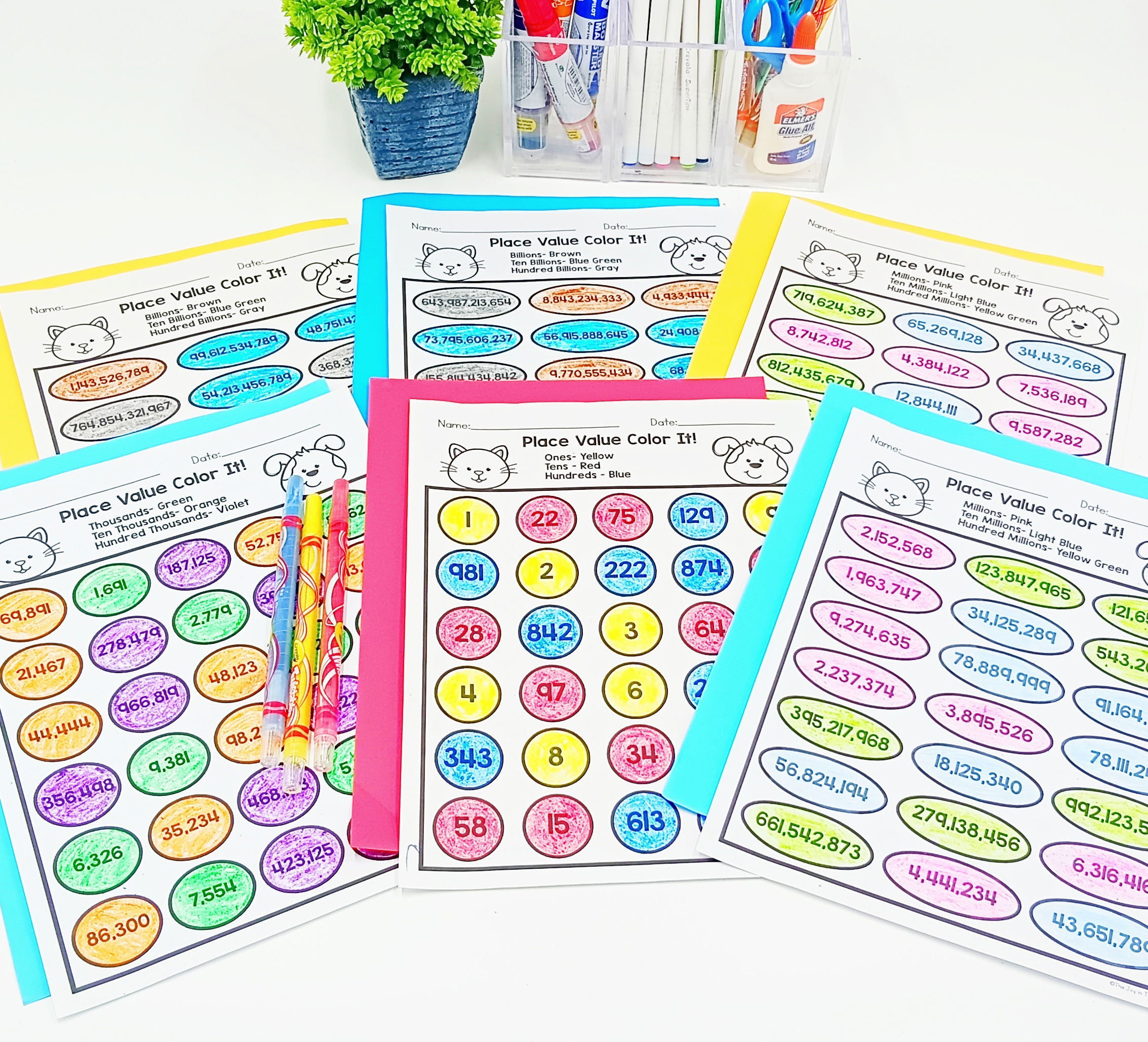
3. Cut and Paste Worksheets These activities require students to cut out numbers and paste them in the correct place value slots. This tactile exercise helps solidify their understanding by physically manipulating the numbers.

4. True or False Activities Students evaluate statements about place value. For example: “The digit 5 in 5,432,198 is in the hundred thousand place.” True or False? It’s a quick and engaging way to assess understanding.
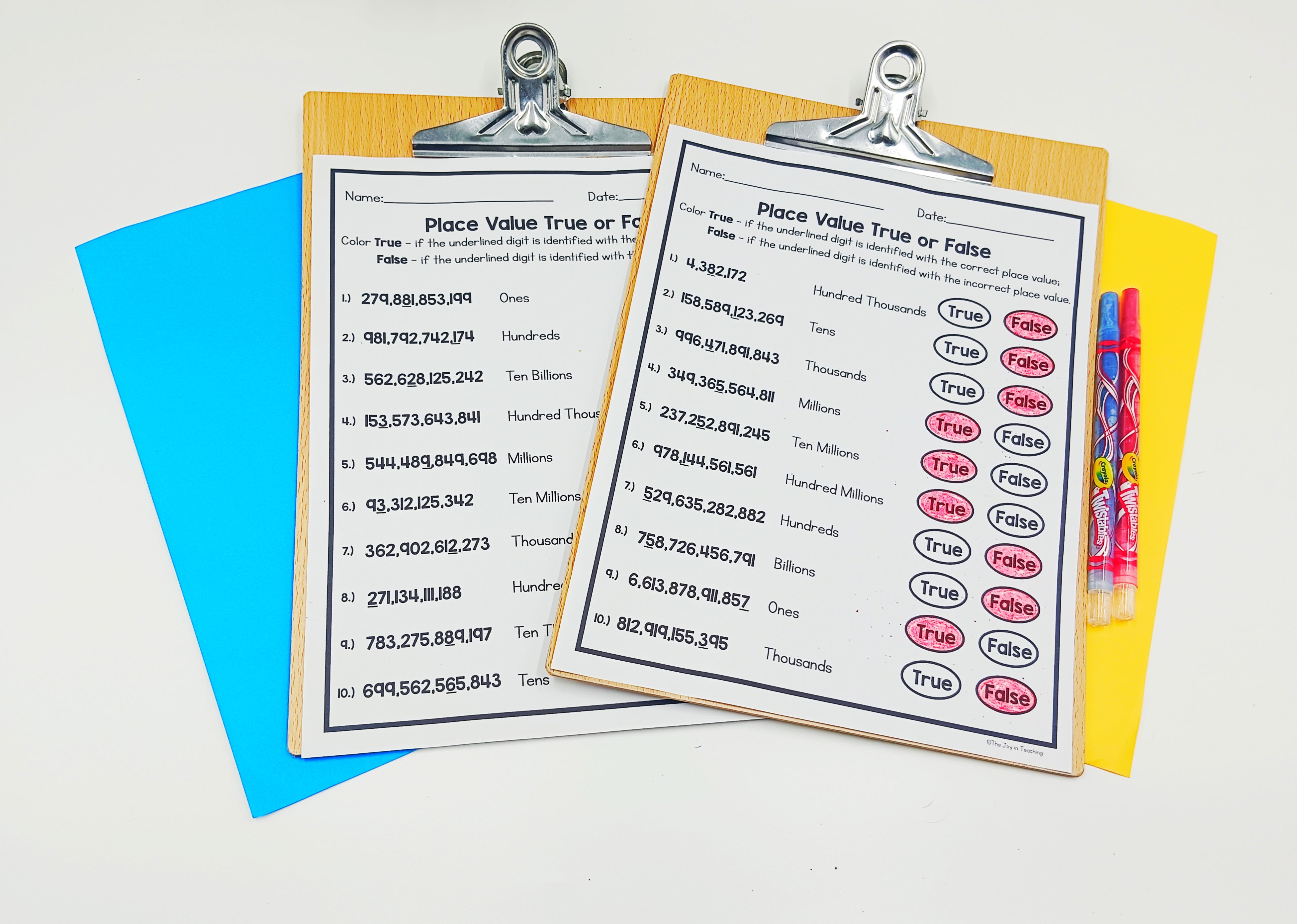
5. Place Identification Activities Have students identify the place of a given digit within a number, helping them strengthen their understanding of the order and names of place values.
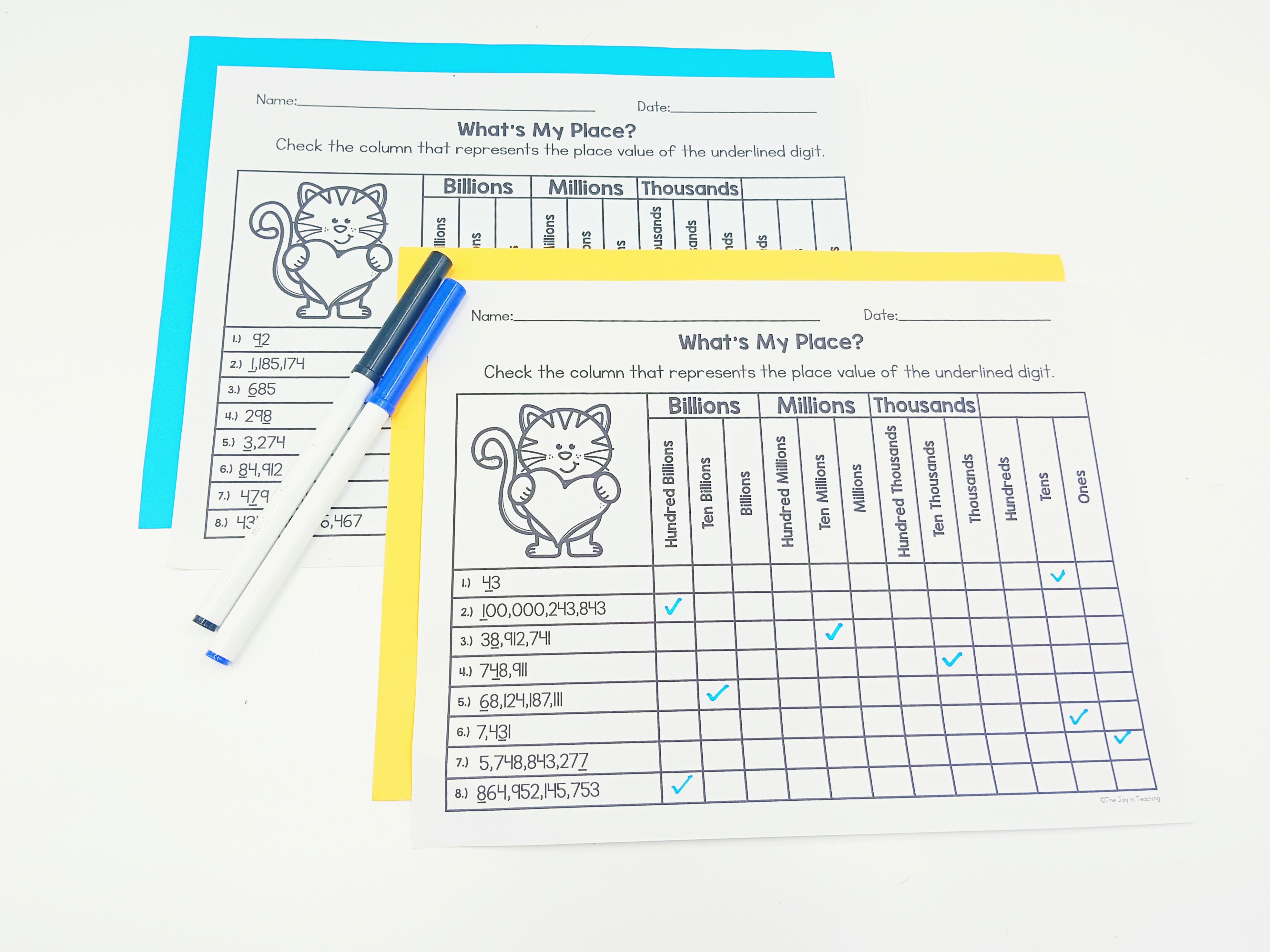
6. Expanded Form Conversion Convert numbers from standard form to expanded form, helping students understand the components of large numbers. For example, the number 7,654,321 becomes 7,000,000 + 600,000 + 50,000 + 4,000 + 300 + 20 + 1.
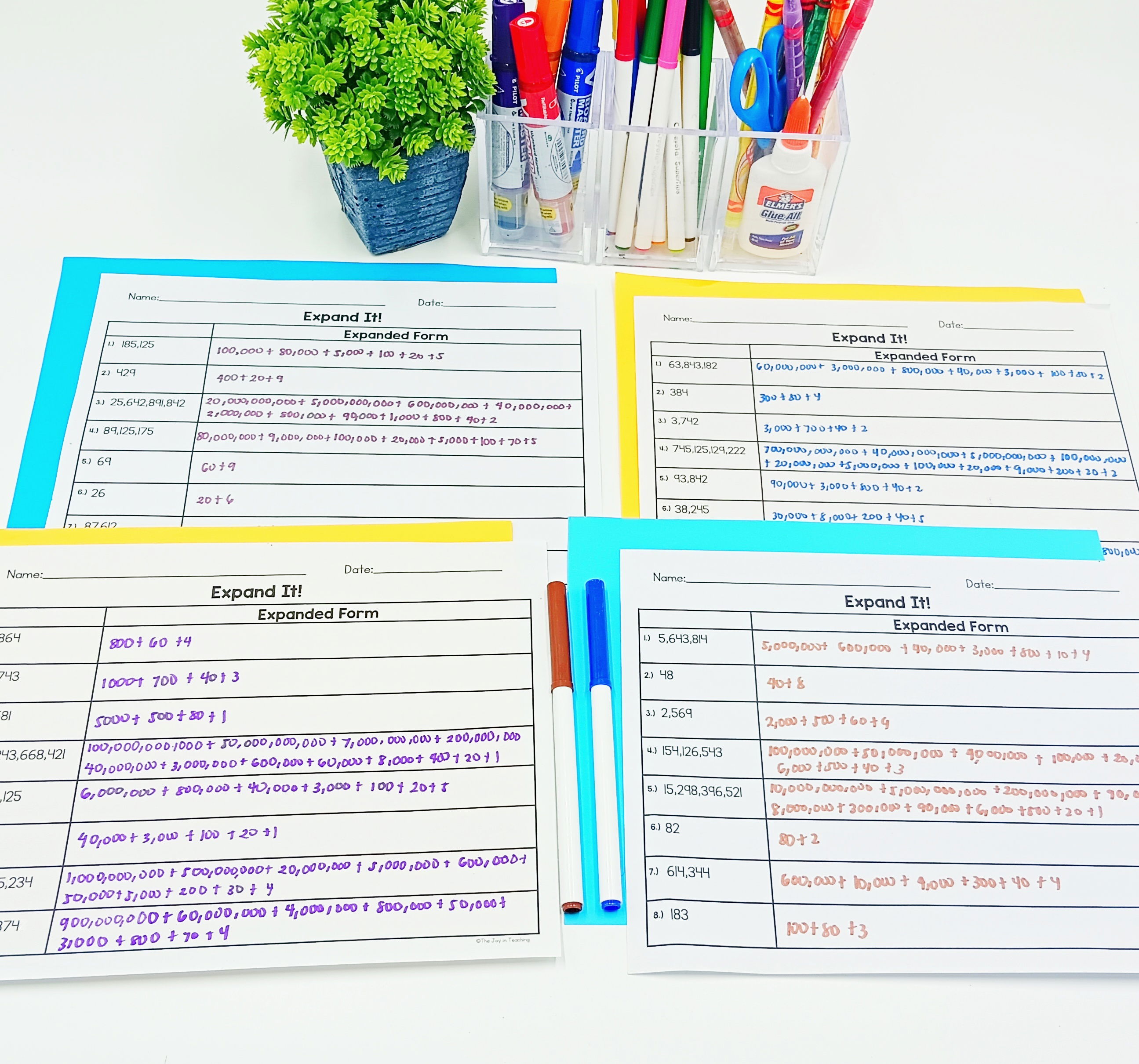
7. Comparing Numbers Students compare multi-digit numbers to see which is greater, using >, =, and < symbols. This exercise strengthens their understanding of how place value affects numerical comparison.
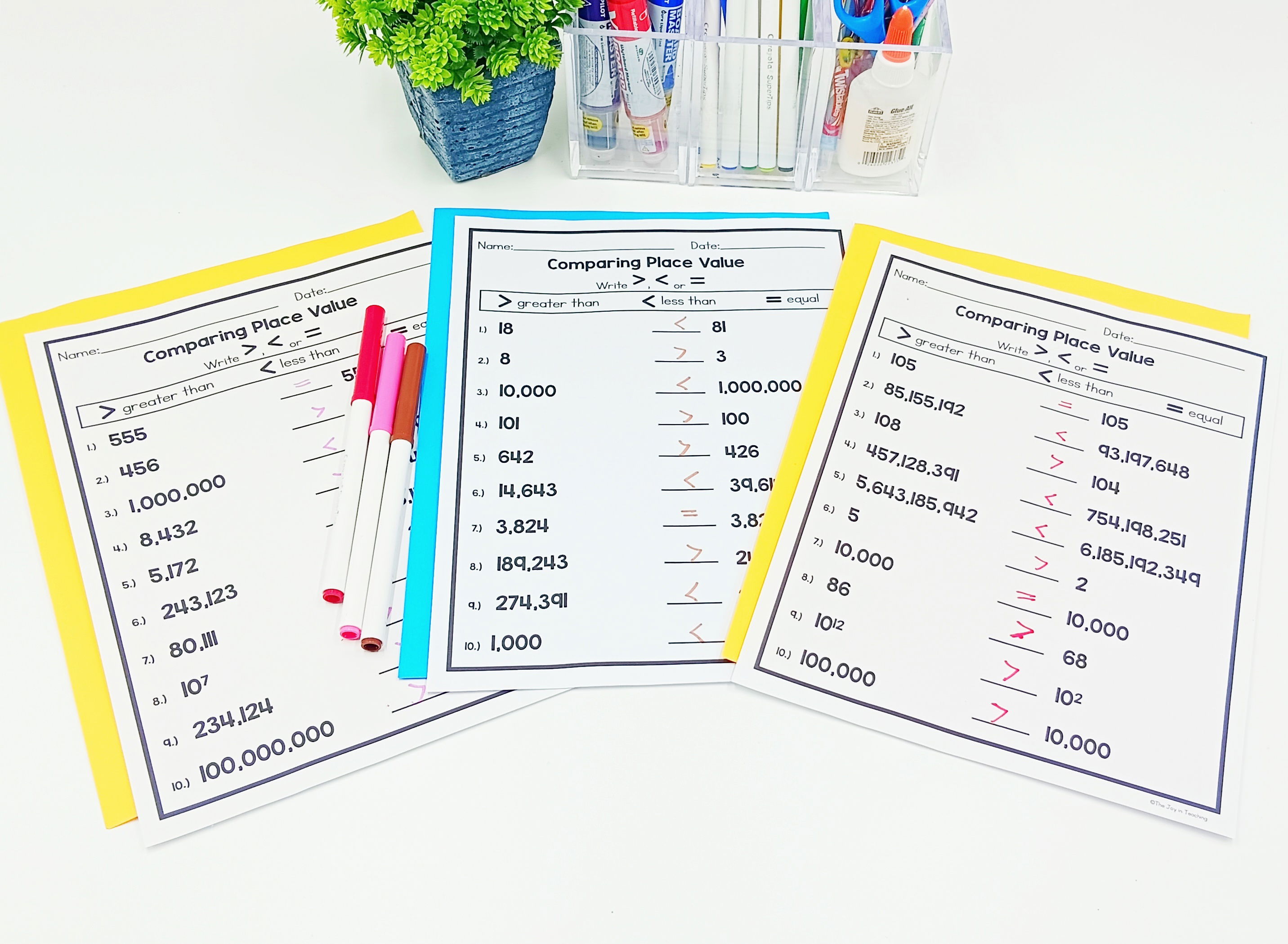
How to Use These Activities These worksheets are incredibly versatile and can be used in a variety of ways:
- Worksheets: Perfect for in-class practice or homework assignments.
- Assessment: Use these activities to assess students’ understanding and identify areas that need more practice.
- Center Activity/Repeat Practice: Laminate some of the pages for reusable center activities or repeat practice sessions.
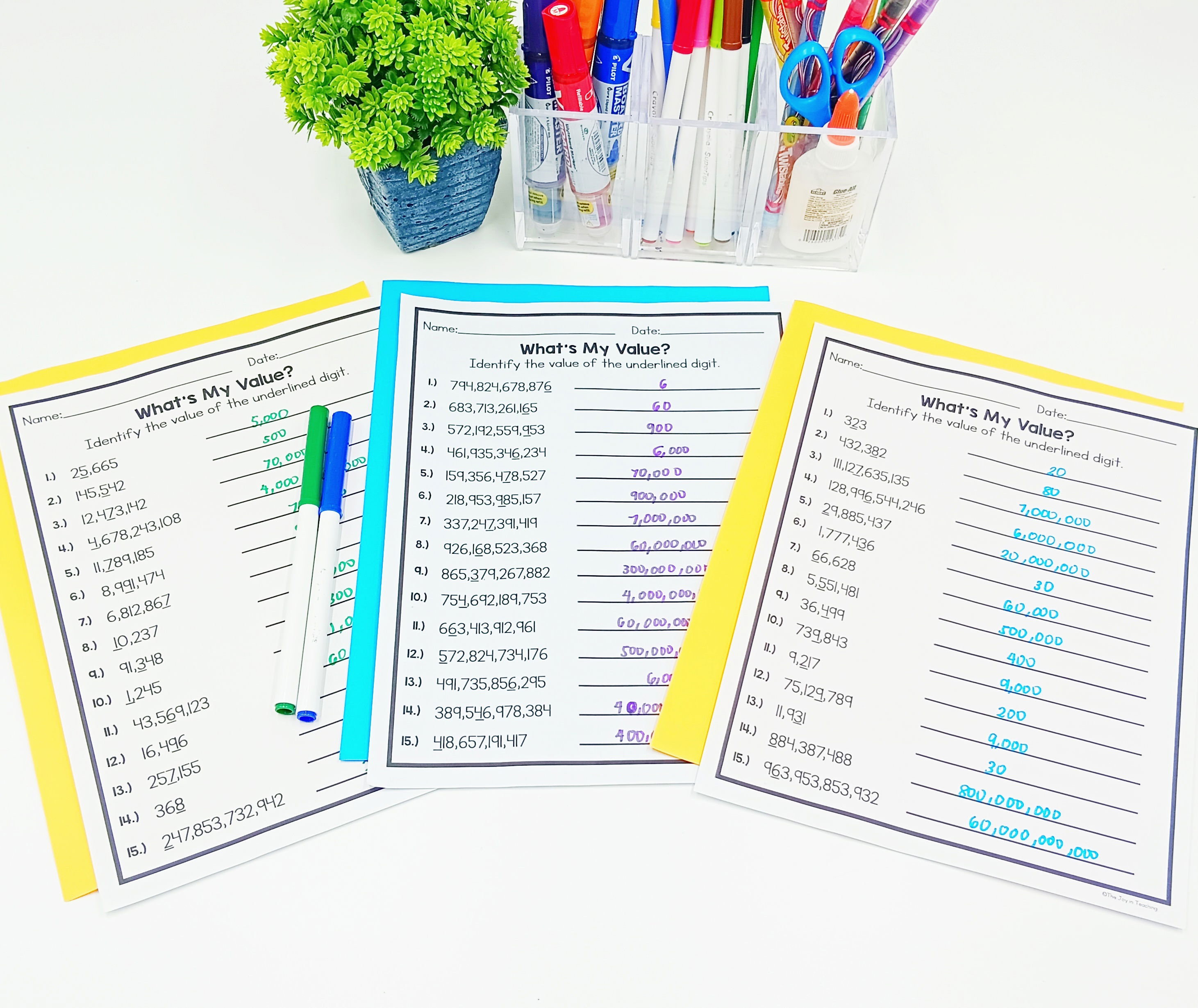
Tips and Tricks for Teaching Place Value
- Use Visual Aids: Kids are visual learners, so use charts and color-coded materials to help them see the differences between place values.
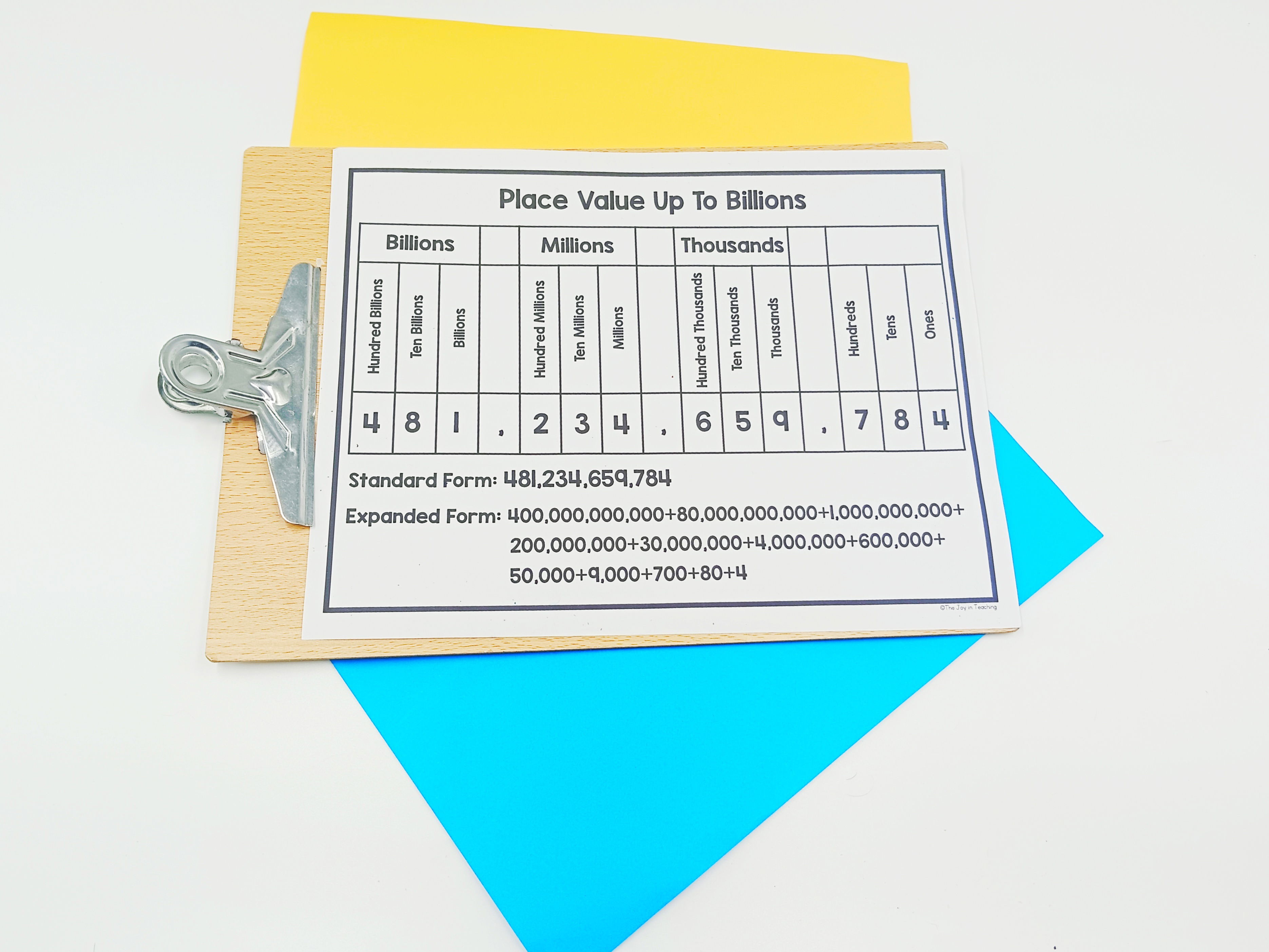
2. Make It Interactive: Turn learning into a game. For example, hold a place value scavenger hunt where students find objects around the classroom or house that represent different place values.
3. Incorporate Technology: Use educational apps and online games focused on place value to supplement your lessons and provide additional practice.

4. Relate to Real Life: Show students how place value is used in real life, like discussing the population of different countries, distances between planets, or even your school’s budget.
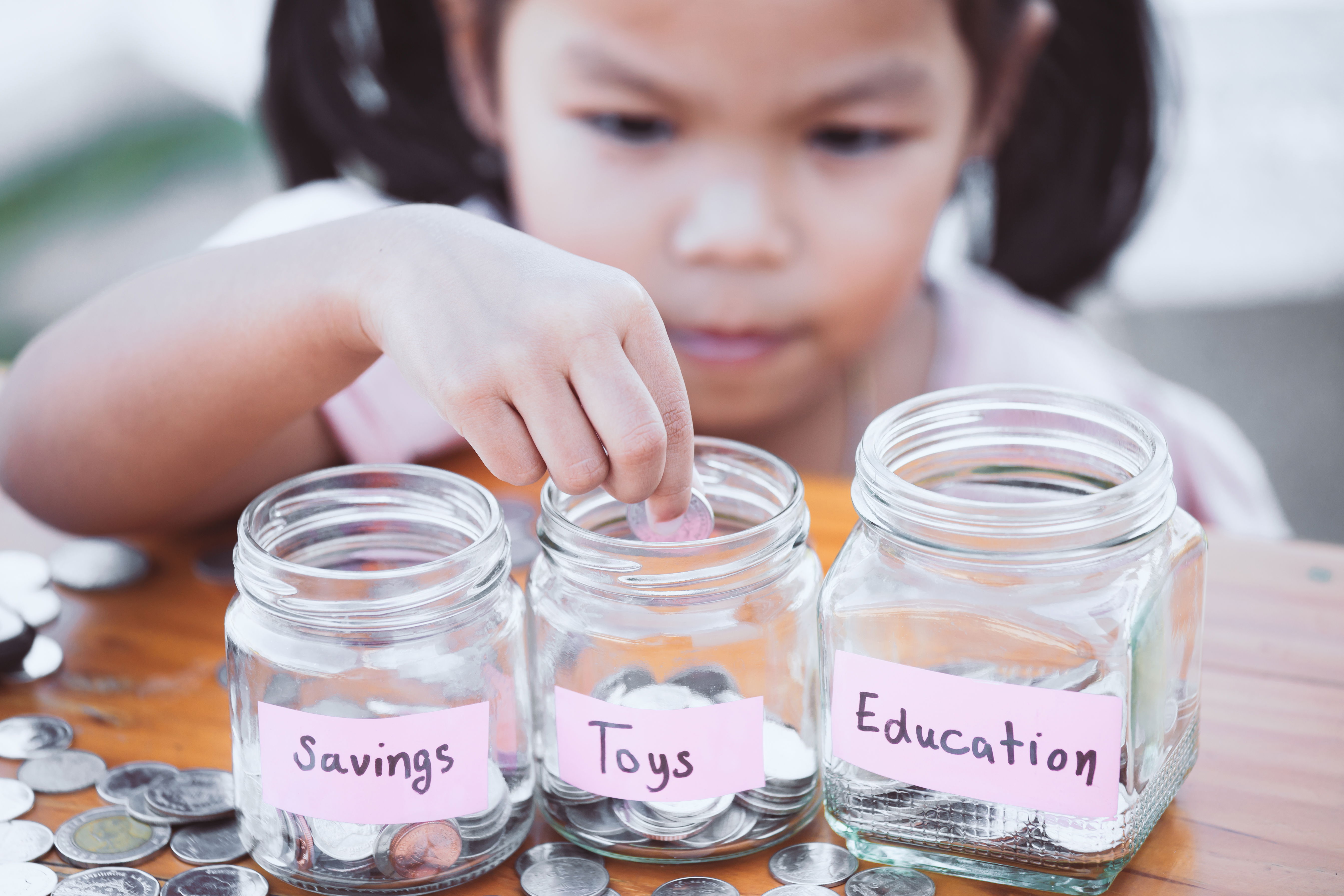
5. Repetition is Key: Regular practice is essential for mastering place value. Incorporate place value activities into your daily routine.
6. Use Humor and Stories: Math doesn’t have to be serious all the time. Use funny stories or characters to make the numbers come alive, such as "Billy the Billionaire" who loves counting his billions.
7. Celebrate Small Wins: Recognize and celebrate when students grasp a new concept. Positive reinforcement can boost their confidence and motivation to learn.

Personal Stories: Making Learning Memorable
Last week, during a place value coloring activity, one of my students, Sarah, colored the billions place in bright pink. When I asked her why she chose that color, she said, “Because billions are as special as unicorns!” 🦄 Moments like these remind me of the joy and creativity that come with teaching. Another time, we were doing a cut-and-paste activity, and little Timmy decided to glue the digits in a funny face pattern instead of a straight line. It was hilarious, and it gave us a chance to talk about the importance of order in place value. Laughter and learning truly go hand in hand.
Conclusion: Make Place Value Learning Fun and Engaging Teaching place value up to billions doesn’t have to be a daunting task. With the right activities, a touch of humor, and a lot of enthusiasm, you can make learning place value an adventure your students or children will enjoy. From coloring and cut-and-paste to true or false questions and expanded form exercises, there’s something for every learner.
Follow Me for More Teaching Tips with Joy For more tips, resources, and a daily dose of teaching joy, follow me on:
Got questions or want to share your success stories? Drop me an email at thejoyinteaching@gmail.com. I love hearing from fellow educators and parents! Happy Teaching!
Joy Medalla
The Joy in Teaching 💛